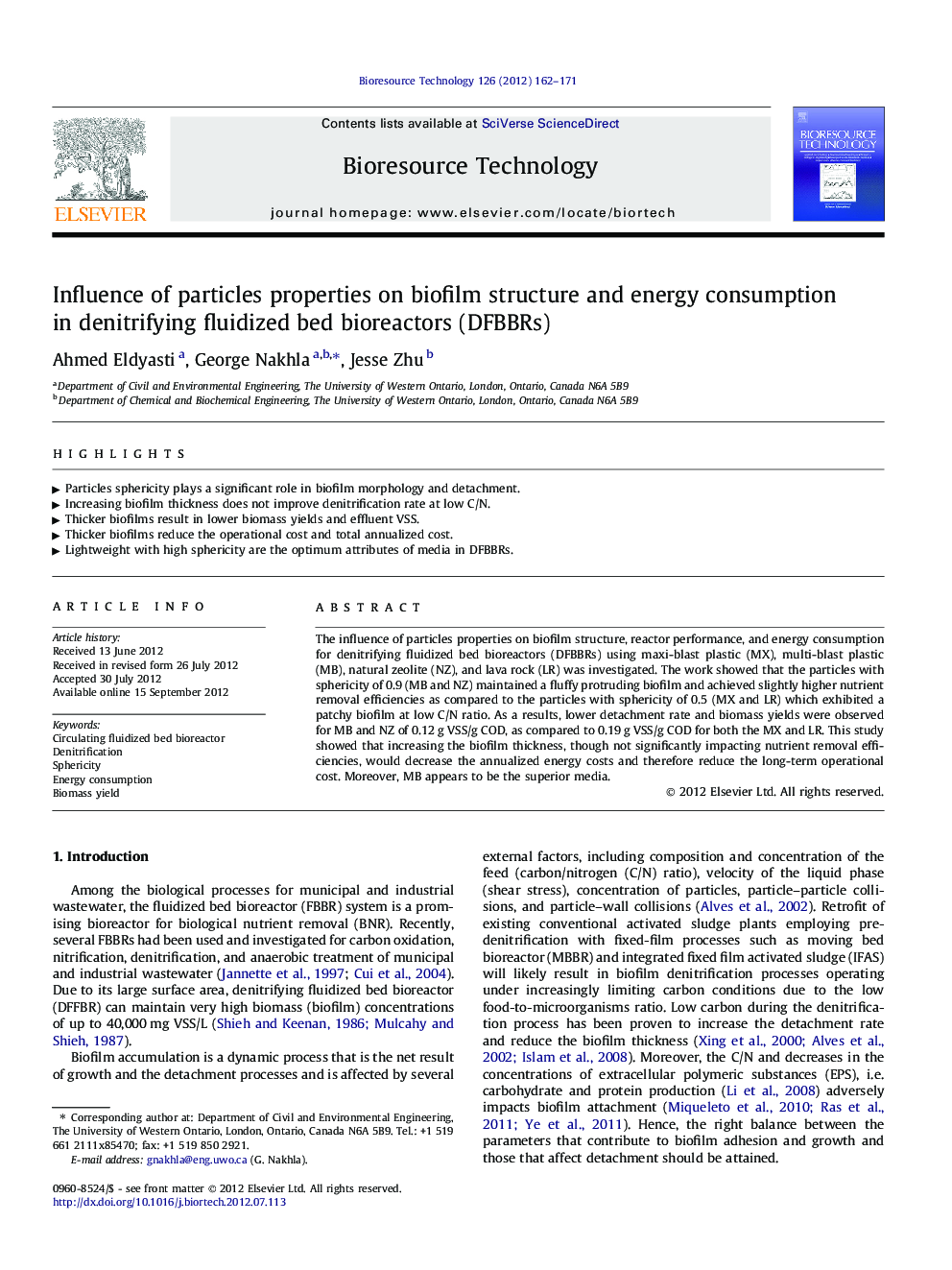| Article ID | Journal | Published Year | Pages | File Type |
|---|---|---|---|---|
| 681249 | Bioresource Technology | 2012 | 10 Pages |
The influence of particles properties on biofilm structure, reactor performance, and energy consumption for denitrifying fluidized bed bioreactors (DFBBRs) using maxi-blast plastic (MX), multi-blast plastic (MB), natural zeolite (NZ), and lava rock (LR) was investigated. The work showed that the particles with sphericity of 0.9 (MB and NZ) maintained a fluffy protruding biofilm and achieved slightly higher nutrient removal efficiencies as compared to the particles with sphericity of 0.5 (MX and LR) which exhibited a patchy biofilm at low C/N ratio. As a results, lower detachment rate and biomass yields were observed for MB and NZ of 0.12 g VSS/g COD, as compared to 0.19 g VSS/g COD for both the MX and LR. This study showed that increasing the biofilm thickness, though not significantly impacting nutrient removal efficiencies, would decrease the annualized energy costs and therefore reduce the long-term operational cost. Moreover, MB appears to be the superior media.
► Particles sphericity plays a significant role in biofilm morphology and detachment. ► Increasing biofilm thickness does not improve denitrification rate at low C/N. ► Thicker biofilms result in lower biomass yields and effluent VSS. ► Thicker biofilms reduce the operational cost and total annualized cost. ► Lightweight with high sphericity are the optimum attributes of media in DFBBRs.
